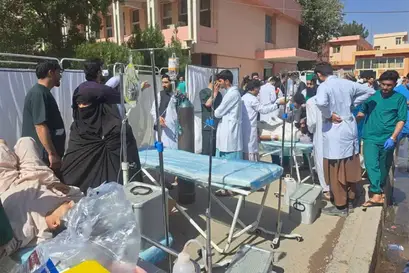Afghanistan Earthquake: In-Depth Analysis of the 6.3 Magnitude Quake
Introduction: Afghanistan
The seismic upheaval in western Afghanistan has left a trail of devastation, claiming at least 15 lives and leaving 78 others injured. This catastrophic event unfolded when a powerful 6.3 magnitude earthquake struck approximately 40km from the city of Herat, situated close to the Iranian border, at around 11:00 local time.
Epicenter and Geological Insight
The US Geological Survey meticulously recorded the quake’s epicenter, pinpointing it near Herat. This city, a cultural hub, finds itself at the heart of the seismic activity. The region, nestled within the Hindu Kush mountain range, is prone to such occurrences due to its proximity to the intersection of the Eurasian and Indian tectonic plates.
Immediate Aftermath and Structural Impact
As the tremors reverberated, buildings succumbed to the forces, trapping individuals under rubble. Eyewitness accounts, like that of Herat resident Bashir Ahmad, vividly describe the horror: “Wall plasters started to fall down, and the walls got cracks; some walls and parts of the building collapsed.”
Personal Testimonies
Amid the chaos, individuals shared their harrowing experiences. A student, Idrees Arsala, recounted the terror: “I am not able to contact my family, network connections are disconnected. I am too worried and scared; it was horrifying.” This human perspective adds a poignant layer to the disaster, emphasizing the emotional toll on those directly affected.

Humanitarian Crisis and Medical Response
The immediate aftermath necessitated a robust medical response. Over 70 injured individuals found themselves at the city’s main hospital, where healthcare professionals worked tirelessly to tend to their wounds. The situation, described by a health official as “very horrible,” underscores the urgent need for humanitarian aid and medical support in the region.
Historical Context and Seismic Vulnerability
Afghanistan’s history is marked by seismic events, especially in regions like the Hindu Kush mountain range. Last year, the province of Paktika experienced a devastating 5.9 magnitude quake, claiming over 1,000 lives and rendering tens of thousands homeless. The recurrent seismic vulnerability highlights the need for proactive measures to mitigate the impact on communities.
The Geographic Context of Herat
Situated 120km east of the Iranian border, Herat is a city with a rich cultural heritage. Its significance extends beyond being a cultural capital; it is home to an estimated 1.9 million people, according to 2019 World Bank data. Understanding the geographical context provides crucial insights into the scale of impact and the potential challenges faced by rescue and relief efforts.
Conclusion: Addressing the Urgency
As we grapple with the immediate aftermath of this earthquake, the urgency of comprehensive relief efforts cannot be overstated. Beyond the tragic loss of lives and the physical toll on infrastructure, there is a pressing need to address the long-term implications on the affected communities. The seismic vulnerability of regions like Herat necessitates a concerted effort in earthquake preparedness, infrastructure resilience, and community education.